Middle-Ages: Timeline, Overview, Important Events, and More
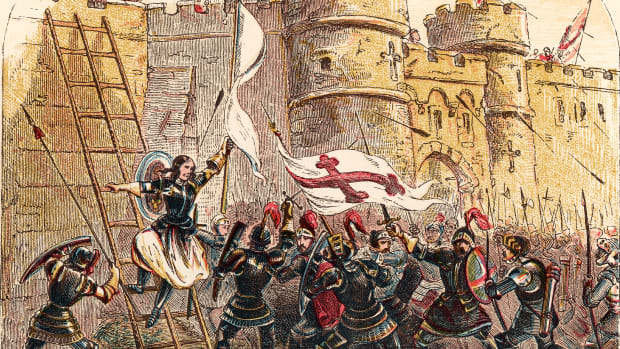
Did you know the history of Europe is so vast that historians divide it into three parts? There are three divisions of Western history– the Classical Age, the Middle Age, and the Modern Age. The Middle Age is also called the Medieval period. Many scholars prefer calling it the latter. The Middle Age subdivides into three more parts called the Early, High, and Late Middle Ages.
The Middle Ages lasted for a long 1500 years, from the 5th century to the 15th century. The world saw many important changes in that period. New ideas and thoughts came up. Even though old ideas continued to remain, the outlook of people changed. The creative expression of the artists in this period brought about new emotions.
The Middle Ages began with the fall of the acclaimed Roman Empire. The early parts of the Middle Ages were also called the Dark Ages. There was a decline in all aspects, especially cultural, economic, and intellectual. The loss of recorded history during this period is what makes historians call it the Dark Age.
When was the Middle Ages?
The Middle Ages began around 500 CE and continued till 1400-1500 CE. This period of European history started with the fall of the Roman Empire. It lasted till the start of the Renaissance era.
The early Middle Ages saw the build of new powers after the end of the centralized Roman government. The High Middle Ages saw the restoration of the Church’s powers. The Catholic Church was in its primes during this time frame. Religious wars and military expeditions called Crusades were also launched in this period. The Late Middle Ages saw the Black Death and Hundred Years’ War. Along with this crisis, this age also saw the disappearance of the feudal system and papacy.
Where did the term Middle Ages come about?
The term Middle Ages comes from a rough translation of the Latin words medium aevum. They mean the time between the Ancient Age and the Modern Age. There was an earlier Latin term media tempestas which meant middle times. It’s known that the word developed only later during the Renaissance era.
The Dark Ages was a term coined by Petrarch, an intellectual in the Renaissance period. He believed that there were two time periods. One of perfection ( in the Roman Empire) and one of darkness. He called it the Dark Ages because the knowledge from the Roman Empire was then lost, leading to darkness in life.
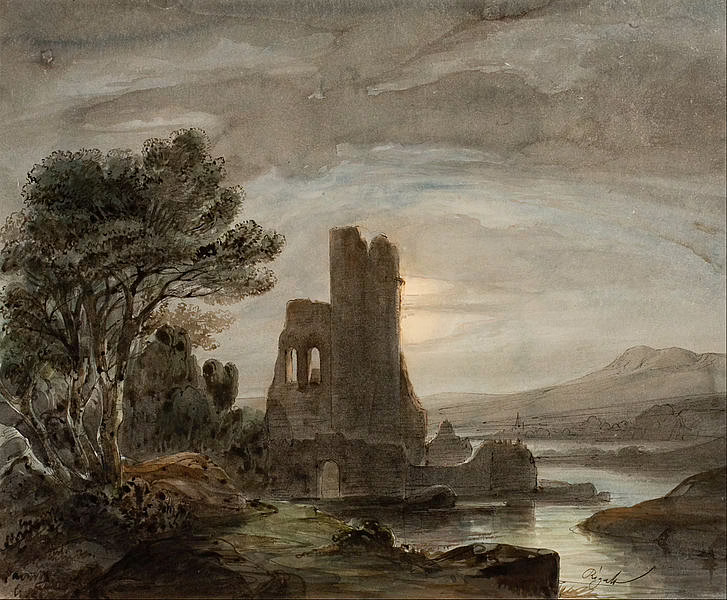
Timeline of important events in the Middle Ages
476 – Fall of the Roman Empire and the start of the Middle Ages
732 – Battle of Tours
800 – Charlemagne is crowned Holy Roman Emperor
1096 – The First Crusade
1206 – Genghis Khan founded the Mongolian Empire
1215 – Signing of the Magna Carta
1337 – The Hundred Years War between England and France
1347 – The Black Death
1444 – Invention of the Printing Press by Johannes Gutenberg and the start of the Renaissance
Religion in the Middle Ages
Christianity and the Catholic Church
Christianity dominated religion in medieval times. But it wasn’t the only belief practiced by the people. Other than Christianity, people also practiced long-established pagan beliefs. They accepted the basic doctrines the Church preached but held onto their old faiths. They also practiced folk magic.
Christianity served as a unifying force in medieval Europe. It influenced the lives of peasants and nobles. This gave power to religious institutions such as the Catholic Church and monasteries. The Church gave political stability and set up a structure like the Roman Empire. The Church became so influential that it had its own laws and lands. It also collected taxes from the citizens and accepted gifts.
The Church had an established hierarchy where the Pope sat as the head of the Church. He was an authority considered equal to the Roman Emperor. The Cardinals, Archbishops, Bishops, Priests worked under the Pope.
The Church undertook missionary activities and pilgrimages. It also served as a place for education and built many schools for the poor to send their children to learn. But they treated those of other faiths with contempt. They also punished those who questioned their orders.
The Emergence of Islam
Islam first emerged in the 7th century in Arabia. It spread under the influence of the Prophet Muhammad till his death in 632 AD. Post his death, Islamic forces started conquering parts of the Eastern Roman Empire. They started their conquests with Syria and went up to Persia, Egypt, North Africa. They even conquered the Iberian Peninsula. By 714, they ruled over much of the Peninsula, which they called Al-Andalus.
The Islamic forces tasted their first defeat only in the mid-eighth century. The forces met defeat in the Battle of Tours in 732 AD at the hands of the Frankish troops. This battle also laid the foundation for the Carolingian Empire. But the main reason for the stop of the Islamic rule was the replacement of the Umayyad Caliphate by the Abbasid Caliphate. The latter was more interested in expanding Islam in the Middle East than in Europe.
The Crusades
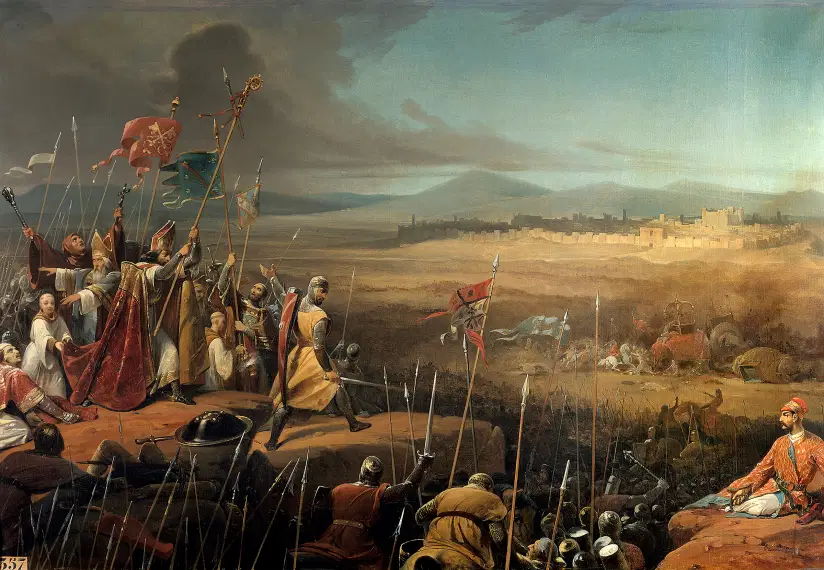
The Church refused to sit still while the Islamic forces took control of Europe. They launched military expeditions called the Crusades. This was to keep a check on the Islamic forces and retake the Christian lands. The Crusades were a sign of the expansion of Christian Europe.
The First Crusade (1095) was a success with the recapture of Jerusalem by the Christian forces. It also resulted in the division of Syria and Palestine. Many Crusades followed, but they did not result in much success. The impact of the Crusades could be seen in the clash of the Western Christendom and the Eastern world. They also led to an increase in international trade and commercial contact.
Trade and Economics in the Middle Age
Life in the Early Middle Ages was more self-sufficient. Trade was very disrupted which resulted in a halt in imported African goods. The local products replaced these in the market. Peasants grew their own crops and made their own bread, wine, and cheese. Industries like spinning, weaving, woodworking, tanning leather, etc were small-scale businesses. They were carried out in rural villages. Salt mines, stone quarries, and shipbuilding made up the large-scale industries.
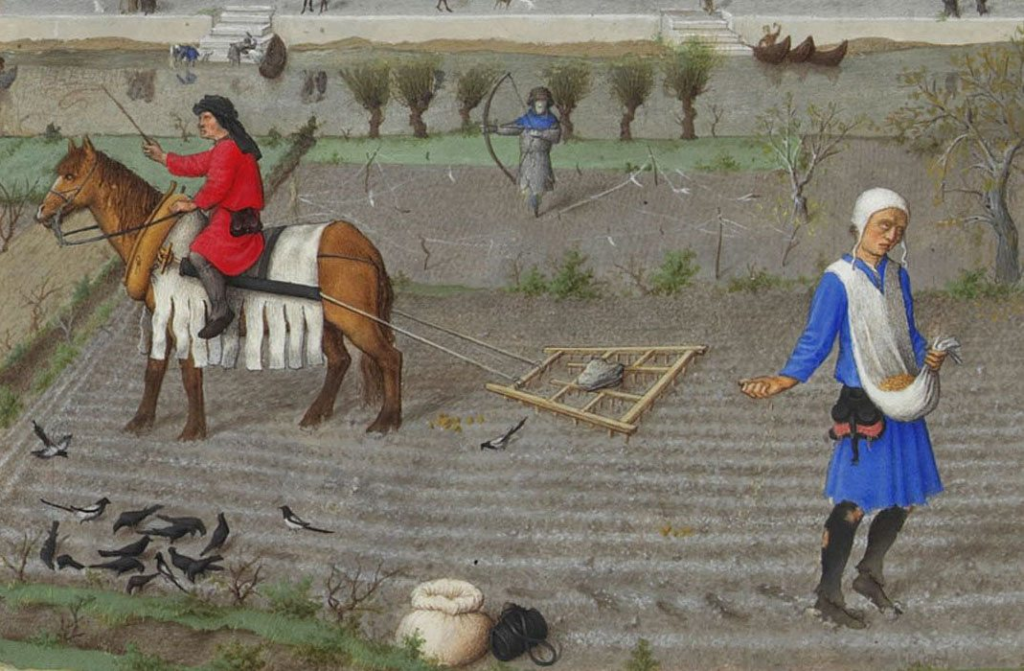
Medieval Europe was more rural and the economy depended on agriculture. As the population grew, the peasants moved out into urban cities and towns. There was a rise in the demand for food and so, prices of goods increased. This combination meant merchants had to expand their businesses. Commercial networks and contacts grew. Many important trading centers came up such as Venice and Flanders. They made use of the Sea routes and the Silk routes for the exchange of goods.
Art and Culture in the Middle Ages
Art in the Middle Ages changed based on location. Medieval Age art can be divided into three styles :-
- Byzantine Art – this art style was seen during the Dark Ages by artists from the Eastern Roman Empire. The paintings focused more on symbolism and were not realistic. The subjects were serious and religious.
- Romanesque Art – Roman and Byzantine art influenced this style. The focus was on Christianity. The details of this art were seen on stained glass, wall murals, domed ceilings, and carvings.
- Gothic Art – this style grew out of Romanesque style. The focus began to shift beyond religion and into animals in mythic scenes. Artists used brighter colors and dimensions and drew more realistically.
Some notable artists during the Middle Ages are :-
- Donatello- Known for his sculptures of Mary Magdalene, David, and Madonna.
- Ambrogio Lorenzetti- One of the central figures for the influence of the Renaissance. ‘The Presentation in the Temple’ is one of his famous paintings.
- Giotto Di Bondone- Known for the painting of Lamentation. Also famous for his Frescos in the Scrovegni Chapel in Italy.
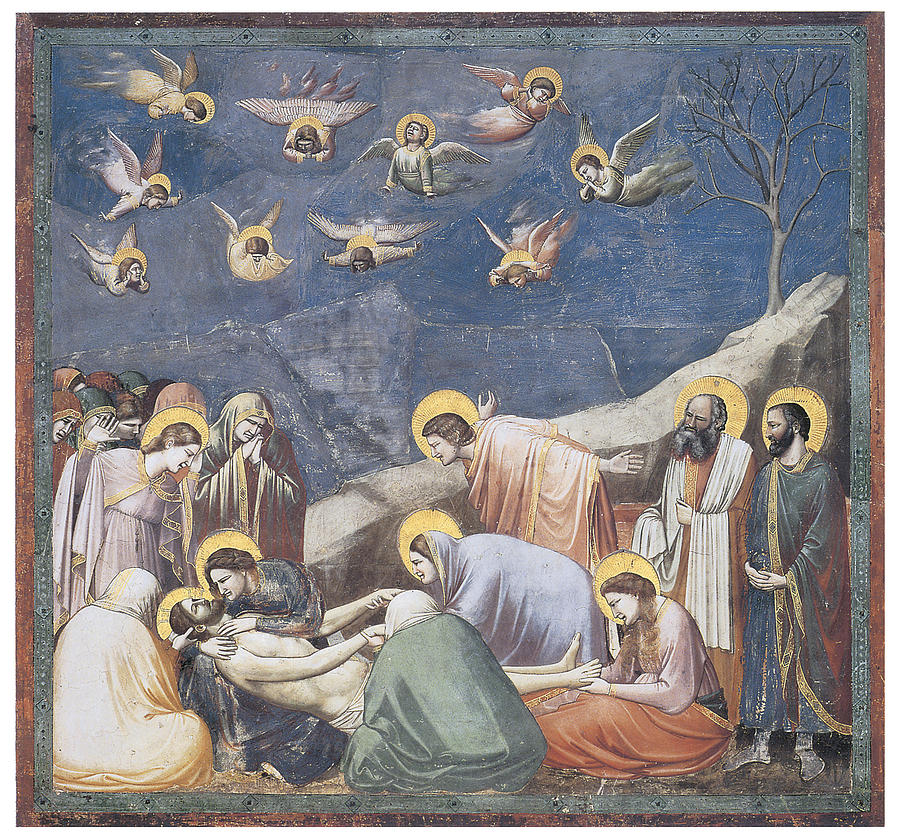
Music and Theatre in the Middle Ages
Music in the Medieval Ages gave way to the development of music in the Renaissance. Music in this age centered around the Church. The main genres of music were non-religious secular music and sacred music. The Middle Ages laid the foundation for music notation and music theory practices. These shaped the Western music we know of today.
Secular music took form in vocals and duets called Italian madrigal sung in Latin. Troubadours and Trouvères performed this music. Musical instruments included the flute, pan flute, lute, zither, sackbut, etc.
Theatre in the Middle ages started with religious themes. There were three types- morality plays, miracle plays, and mystery play. They covered many genres like farces, masques, and drama. Some of the most famous medieval plays are York Mystery Plays, the Chester Mystery Plays. ‘Everyman’ was a famous morality play. ‘The Interlude of the Student and the Girl’ is one of the first secular plays.
Literature and Architecture in the Middle Ages
Few people knew how to read and write during this age. The religious clerks and monks wrote hymns, songs, and philosophical documents. Some popular literature of this age were-
- The Golden Book by the Archbishop of Genoa Jacobus de Voragine.
- The Canterbury Tales by Geoffrey Chaucer.
- The Divine Comedy by Dante spoke about his view of the afterlife.
- The Decameron by Giovanni Boccaccio described life in 14th century Italy.
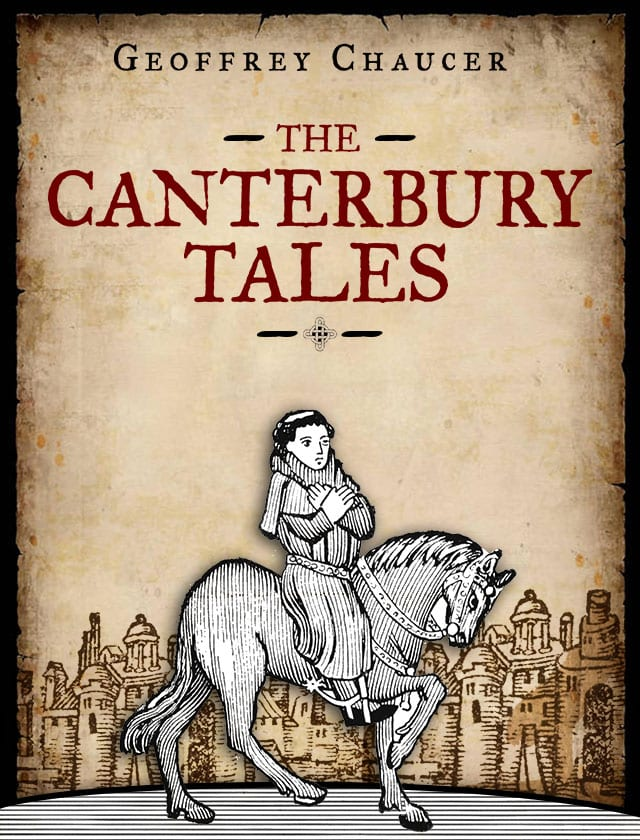
Architecture in the Middle Ages went through three different distinct styles. The syles were more focused on the military and religious buildings. The early Middle Ages saw the pre-romanesque style in their buildings.
This style led to the emergence of the Romanesque style. It was characterized by the use of arches, stone roofs, buttresses, barrel vaults. The later Middle Ages saw the arrival of the Gothic style. The defining features were the gothic arch and rose windows. Flying buttresses and sculptures of gargoyles adorned the many towers.
Examples include :-
- Palatine Chapel in Aachen (Pre-romanesque style)
- Maria Laach Abbey (Romanesque style)
- Reims Cathedral (Gothic style)
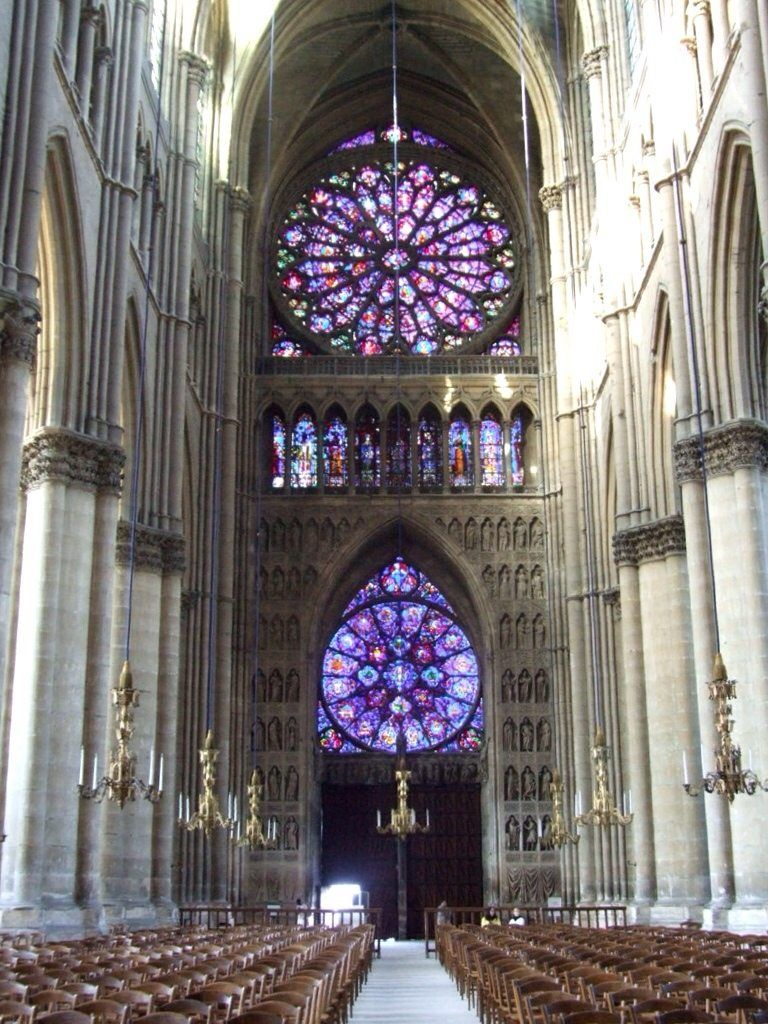
Society in the Middle Ages
The feudal system prevailed in medieval times in Europe. The village spread out around the manor, run by a lord. The lands were granted to people for service. The leader of the land was the King, who divided the land to the Barons and Nobles. The Barons maintained an army or had to pay taxes. The lords owned the manors and served the king as knights. The church also received a tax of 10% from all the people. This made the Bishop, head of the Church, also powerful.
The Signing of the Magna Carta
The Magna Carta is one of the important documents in democracy. It was drafted at Runnymede and stated that the king was not above the law. It gave the people certain rights. King John of England signed it on June 15 of 1215.
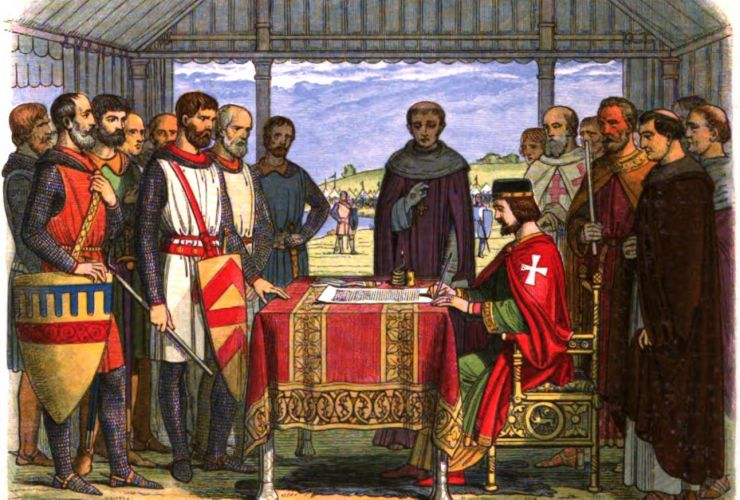
The reason was the rebellion led by the barons of northern England who were not happy paying high taxes. The high taxes were a result of his war with France, which later angered the Pope as well. When neither party withheld their side of the agreement, a civil war broke out. It ended in 1216 with the death of King John.
The Hundred Years War
The war lasted from 1337 to 1453 between England and France. It started when King Edward III claimed to be the rightful king of France. There were several other reasons that elongated the war. They were the wool trade, disputes over lands, and support of Scotland by the French. King Edward III led raids into lands called chevauchees. Instead of conquering, he plundered the towns.
The war continued till the French took control of Bordeaux. This drove the English army out of France. A key figure in the war was a young peasant girl, Joan of Arc, who led the French army into several victories.
The Black Death
In the period of 1347 to 1350, Europe was in turmoil due to the contagious plague that spread. The plague is believed to have spread from the black rats that lived on European merchant ships. The disease did not have a cure then and the cause was not known by the people. Panic spread everywhere and the plague wiped out whole towns and cities. It took Europe 150 years to rebuild itself from the deadly plague.
The Renaissance and the End of the Middle Ages
The decline of the Church’s power and the feudal systems were the main reasons for the downfall of the Middle Ages. Contact with the advanced Byzantine civilizations made nobles less powerful. The increased interactions with different civilizations and cultures, the emergence of humanism and technological developments, the rediscovery of Greek and Roman texts caused Renaissance to follow through after the Middle Ages.
Middle Age Facts
- Animals could be held on trial. Pigs were the ones found guilty on many occasions.
- King Edward III made archery practice compulsory for every Englishman.
- There was a unique beauty trend in this age. Women shaved off their eyebrows and eyelashes to get perfect hairless faces!
